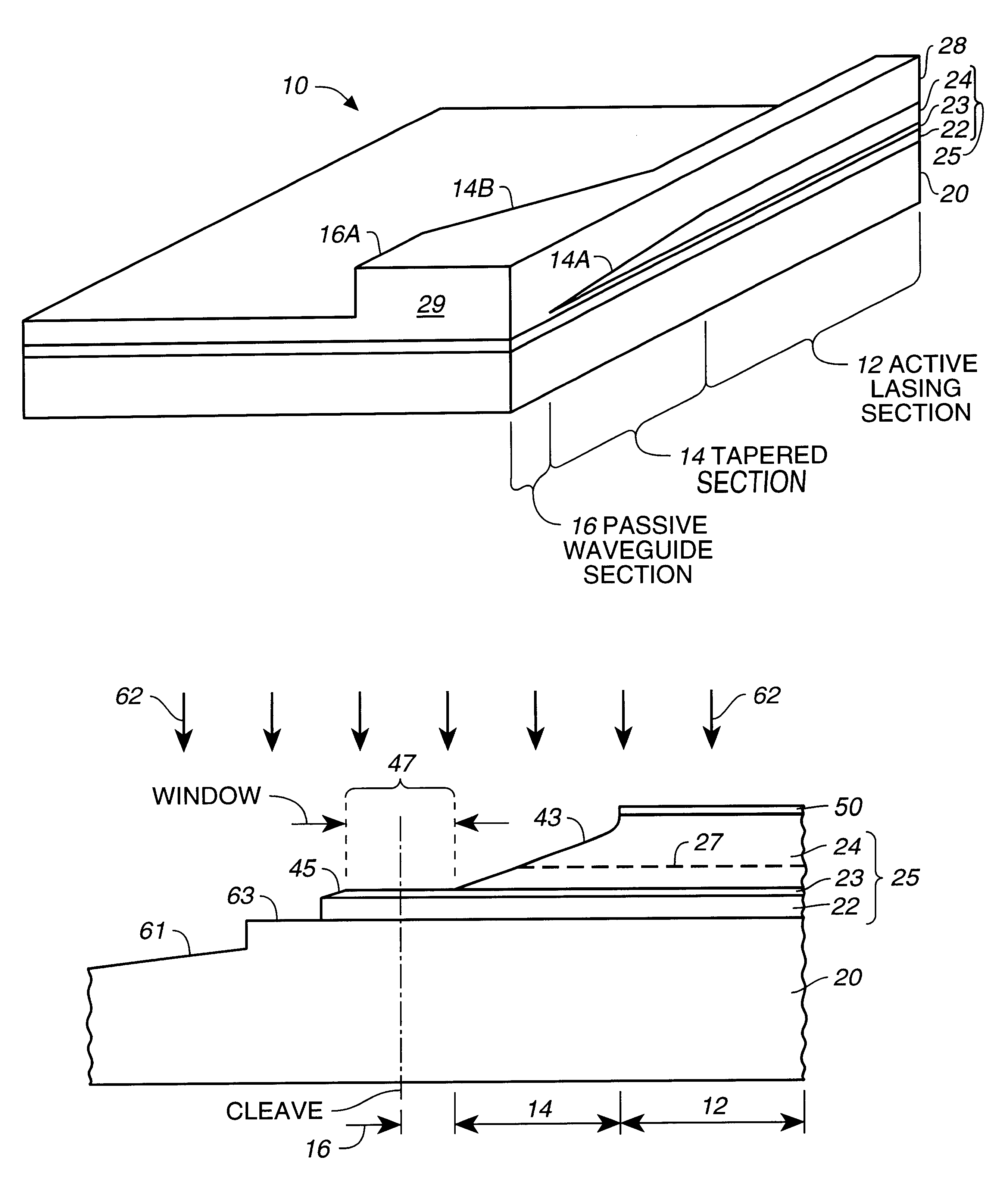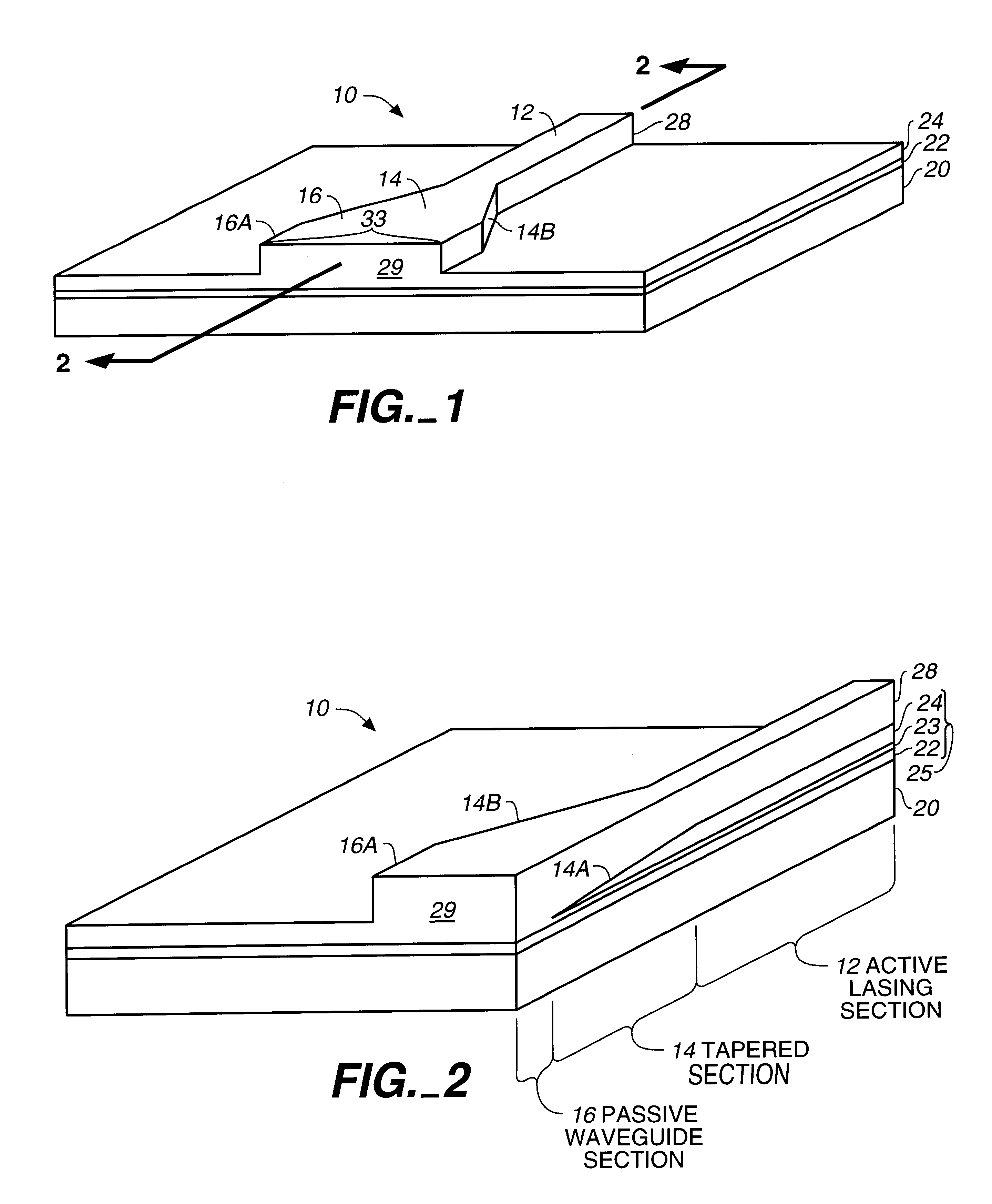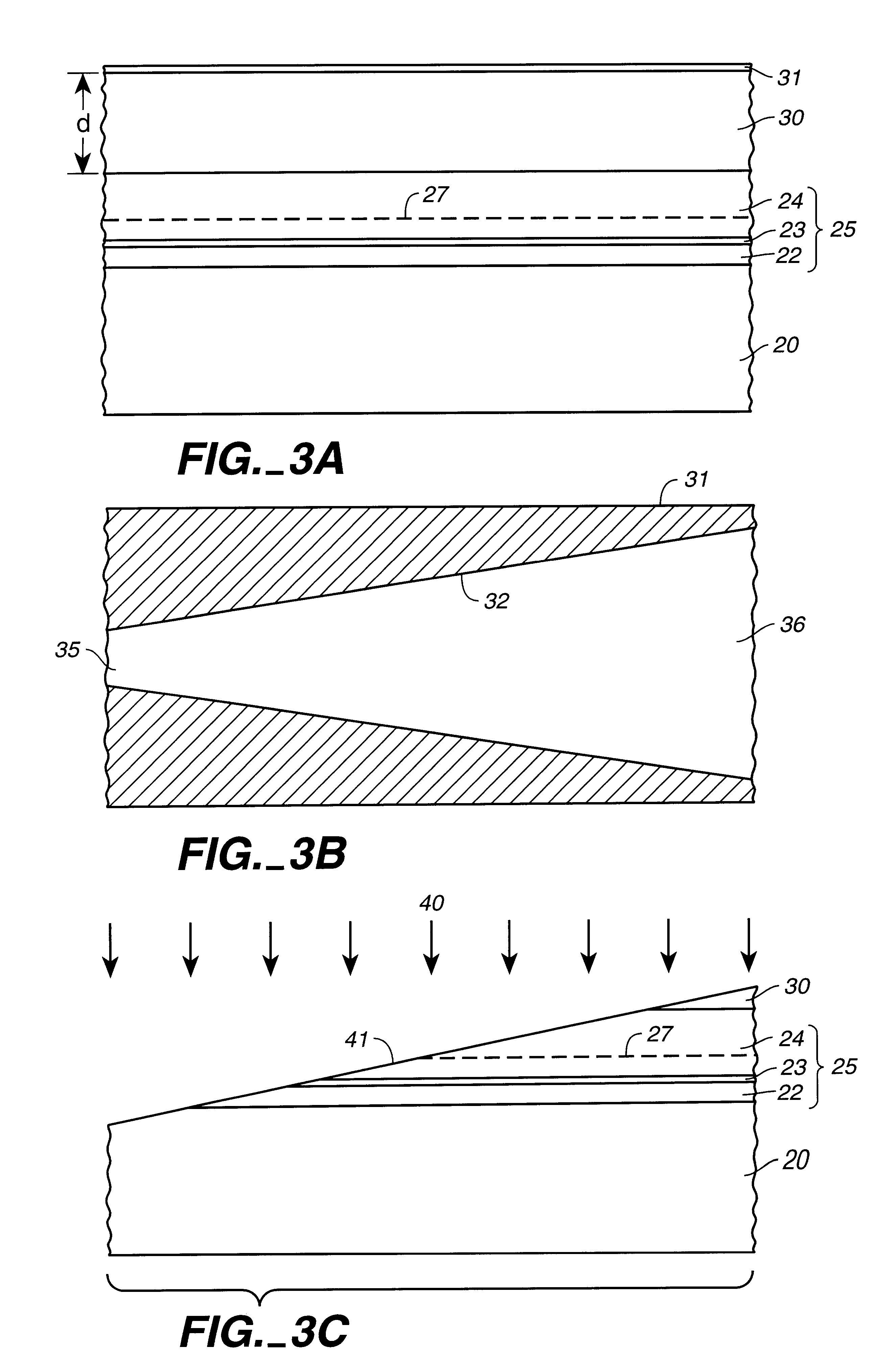Method of forming a tapered section in a semiconductor device to provide for reproducible mode profile of the output beam
a tapered section and output beam technology, applied in semiconductor lasers, instruments, optical elements, etc., can solve the problems of difficult to precisely control the lithographic process, the low fiber coupling efficiency of laser diodes, and the difficulty of elliptical laser diode output beam profil
- Summary
- Abstract
- Description
- Claims
- Application Information
AI Technical Summary
Benefits of technology
Problems solved by technology
Method used
Image
Examples
first embodiment
Reference is now made to this invention, illustrated in FIGS. 3A-3D. In the starting base wafer structure, core waveguide structure 25 comprises two waveguide layers 22 and 24, upper layer 24 including an optically active region 27 and lower layer 22 forming a passive waveguide layer. These layers 22 and 24 are separated by a thin InP etch-stop layer 23, e.g., approximately only 200 thick. Etch-stop layer 23, being so thin, has no significant detrimental effect to the waveguide properties of the higher index materials comprising layers 22 and 24. Lastly, a sacrificial layer 30 comprising InP is grown on the top of waveguide structure 25. An important factor in achieving the desired mode profile is the determination of the thickness of lower passive waveguide layer 22. Since, as will be described later, layer 22 is left intact via the etching process due to the InP etch-stop layer 23, the resultant expanded profile can be calculated based upon the initial growth thickness established...
second embodiment
Reference is now made to this invention, illustrated in FIGS. 4A-4F which provides for more refined control and reproducibility in the taper etch processing. Instead of a single sacrificial layer 30, in this embodiment a stack of sacrificial layers is employed, for example, a thin etch-stop layer 50 of InP followed by an InGaAsP etch-stop layer 51 which is followed by relatively thick InP sacrificial layer 30. Using this thicker etch-stop layer group 50, 51, a clean surface termination can be achieved after completion of the taper etch step with no remaining sacrificial layer 30. The stack stop-etch layers provide a way to form a more uniform waveguide in active waveguide section 12 as will be evident in the following description.
In the etching process of this second embodiment, the first non-selective etching step, the results of which are best seen in FIG. 4B, is identical to that of the previous embodiment. A Br.sub.2 -based etchant 40 is employed to perform a diffusion-limited e...
PUM
 Login to View More
Login to View More Abstract
Description
Claims
Application Information
 Login to View More
Login to View More - R&D
- Intellectual Property
- Life Sciences
- Materials
- Tech Scout
- Unparalleled Data Quality
- Higher Quality Content
- 60% Fewer Hallucinations
Browse by: Latest US Patents, China's latest patents, Technical Efficacy Thesaurus, Application Domain, Technology Topic, Popular Technical Reports.
© 2025 PatSnap. All rights reserved.Legal|Privacy policy|Modern Slavery Act Transparency Statement|Sitemap|About US| Contact US: help@patsnap.com



